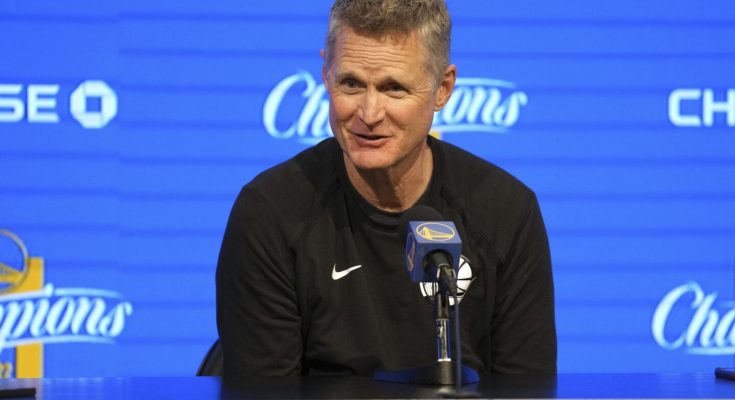It all began with a feeling, a deep-seated conviction that resonated within Steve Kerr from the moment he stepped foot into the Golden State Warriors’ practice facility. This was not just a job; it was a premonition. On his very first day as head coach, in the summer of 2014, Kerr didn’t see a team with potential; he saw a squad poised for greatness. It’s a remarkable insight that is now the subject of “First in 40: The Story of the 2014-15 Warriors,” a documentary series that harks back to the genesis of a dynasty.
The prevailing narrative at the time was one of a talented but underachieving team. The Warriors had been a perennial playoff contender but were often viewed as a second-tier threat, a team that could be exciting on any given night but lacked the championship pedigree to go all the way. They had a young core, a dynamic backcourt in Stephen Curry and Klay Thompson, and a defensive stalwart in Draymond Green, but they were a team without a clear identity, a group of players whose individual talents hadn’t yet coalesced into a championship unit.
Kerr saw something different. He saw a foundation built on an unprecedented combination of shooting, versatility, and basketball IQ. He didn’t just see Curry as a great shooter; he saw him as a revolutionary offensive engine, a player capable of bending defenses with his mere presence. He didn’t just see Thompson as a catch-and-shoot specialist; he saw him as a two-way threat, a silent assassin with a killer instinct. And he didn’t just see Green as a feisty role player; he saw him as the heart and soul of the defense, a vocal leader and a brilliant passer with the ability to orchestrate the entire team from the frontcourt.
Kerr’s vision was more than just a coaching philosophy; it was a paradigm shift. He immediately recognized that the modern NBA was shifting toward a position-less style of play, one that prioritized spacing, ball movement, and three-point shooting. The Warriors, with their collection of skilled and unselfish players, were perfectly suited for this new era. Kerr’s job, as he saw it, was not to overhaul the roster but to unlock its full potential. He introduced a system that encouraged a free-flowing offense, a style of play that prioritized quick decisions and selfless passing. It was a system that, on paper, seemed simple, but in practice, it required a deep trust among the players and a willingness to put the team first.
The documentary, “First in 40,” offers a fascinating glimpse into those early days. Through behind-the-scenes footage and candid interviews, it captures the initial buy-in from the players, the skepticism from some quarters of the media, and the unwavering belief of Kerr and his coaching staff. Kerr’s ability to connect with his players and get them to believe in a new way of playing was crucial. He didn’t come in with a heavy hand, but rather with a clear vision and a collaborative approach. He empowered his players, encouraging them to think the game and make their own decisions on the floor. This trust, this sense of shared purpose, was the bedrock upon which the championship was built.
The documentary highlights key moments from that transformative season. It shows the early struggles, the moments of doubt, and the eventual triumph as the team started to find its rhythm. The story of the 2014-15 Warriors is not just a story of winning; it’s a story of transformation, of a team that went from a perennial playoff participant to a genuine championship contender in a single season. It’s a testament to the power of a clear vision, a collaborative spirit, and a deep understanding of the game.
The premiere of “First in 40: The Story of the 2014-15 Warriors” is more than just a trip down memory lane; it’s a masterclass in coaching and team-building. It reminds us that greatness isn’t always about having the most talented players; it’s about having the right players and a coach who can bring out the best in them. Steve Kerr saw something in that group of players that others missed. He saw not just a team, but a dynasty in the making. And on his very first day, he knew it. The rest, as they say, is history.



